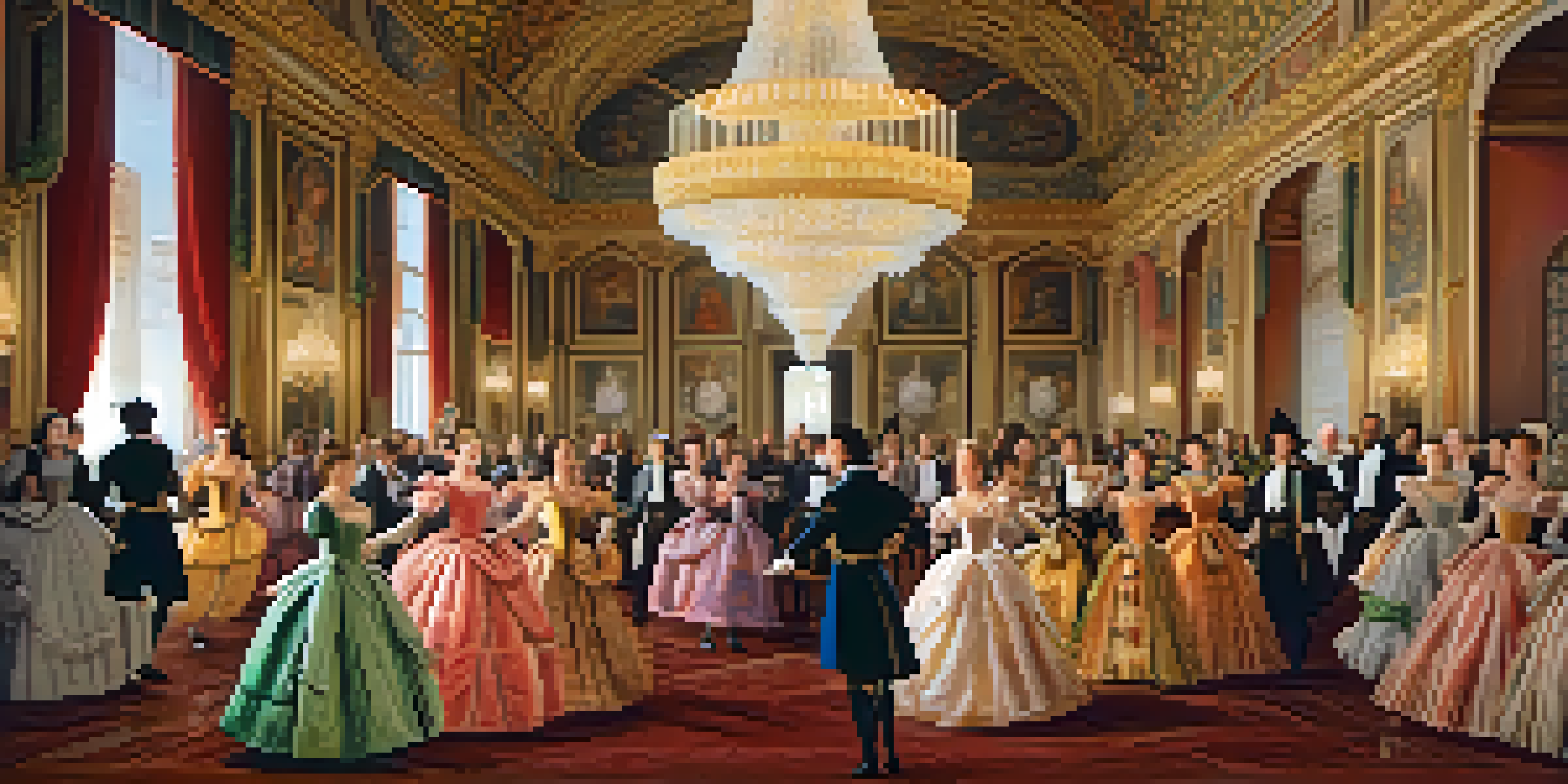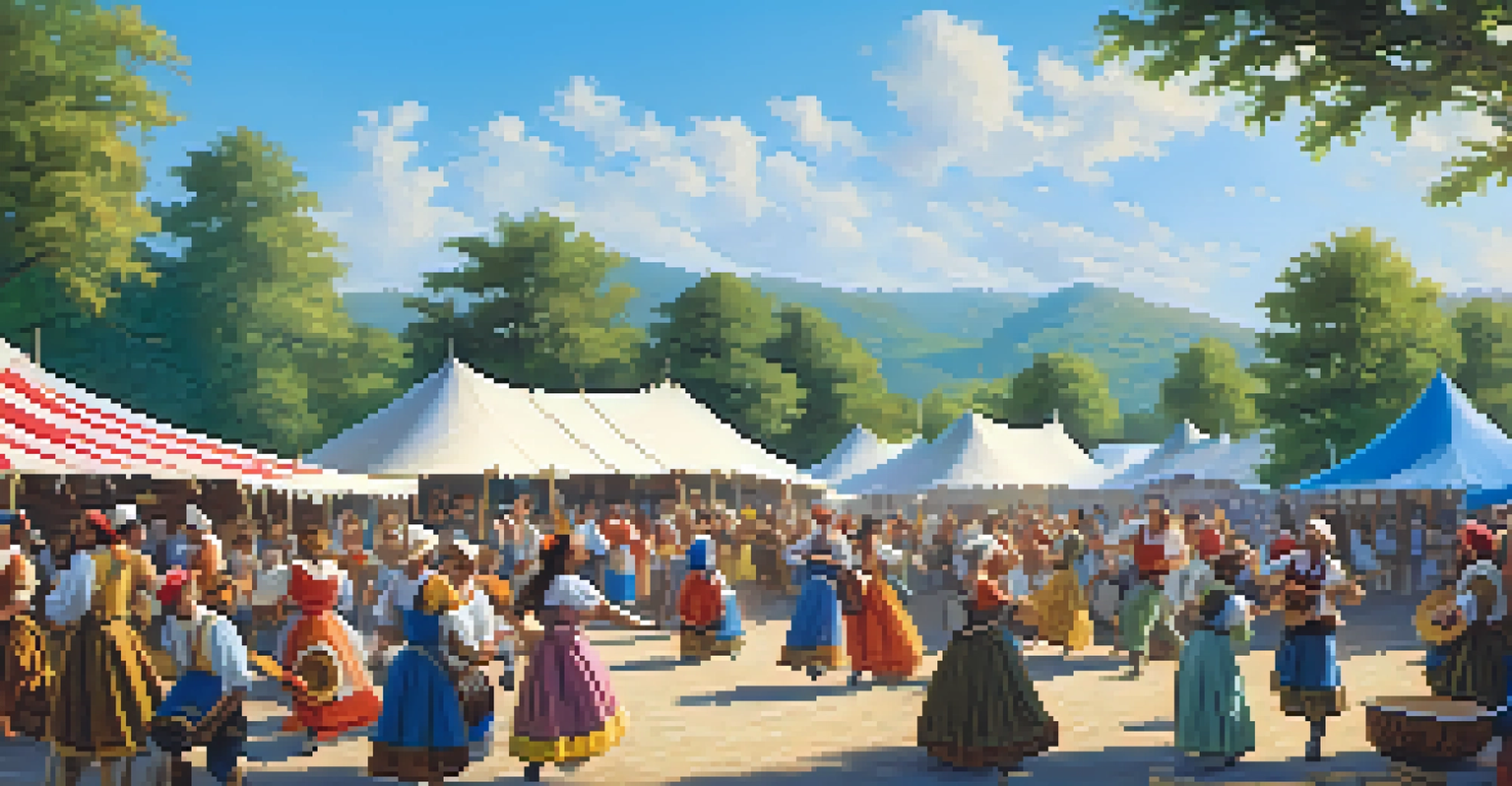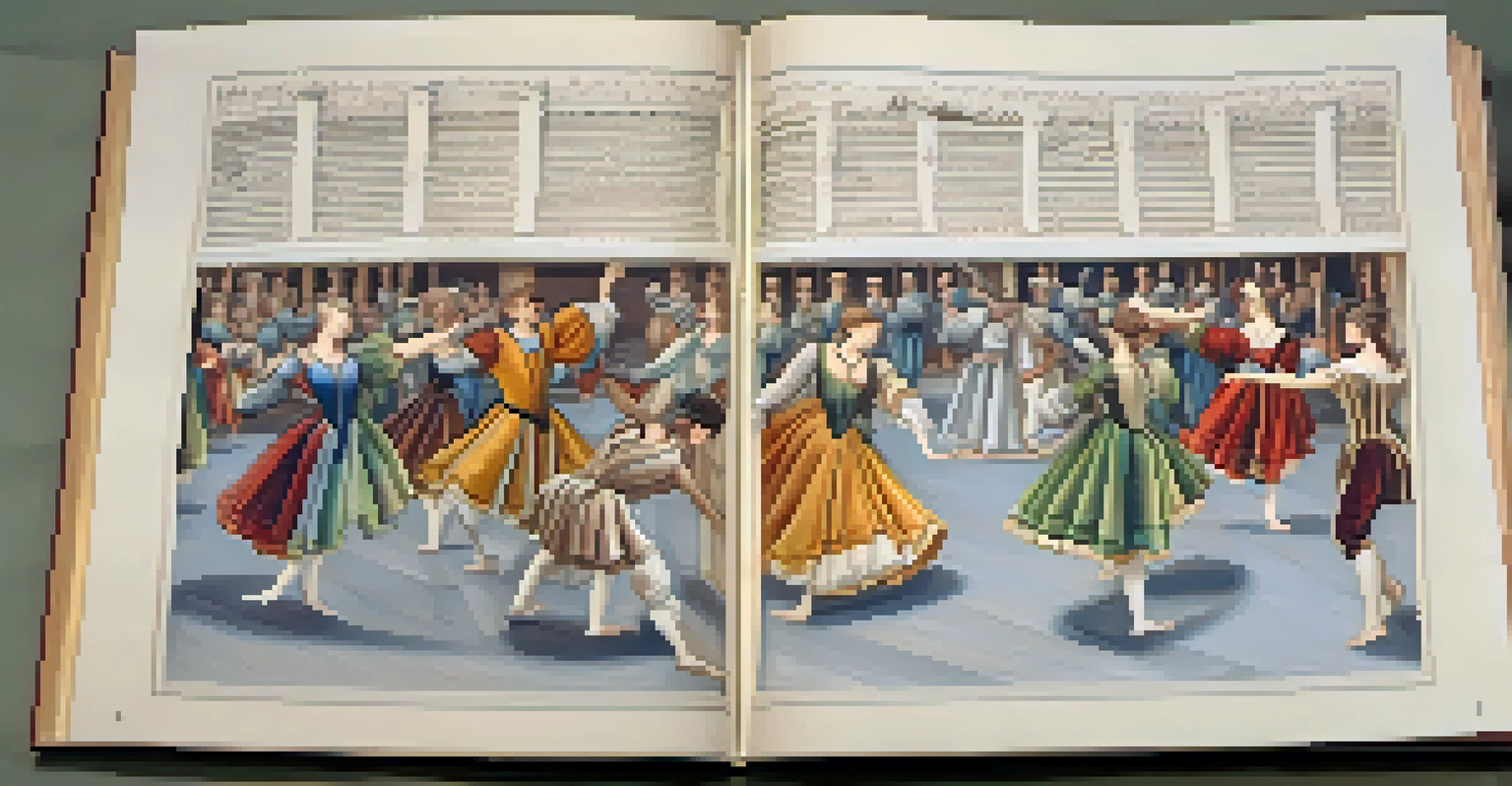The Renaissance Era: Dance as Art and Expression

The Birth of Dance in the Renaissance Era
The Renaissance, a period flourishing from the 14th to the 17th century, marked a revival of art, culture, and intellect. Dance emerged as a vibrant form of expression, reflecting the era's emphasis on humanism and individualism. Unlike the rigid forms of earlier periods, Renaissance dance embraced fluidity and grace, allowing performers to showcase their emotions and creativity.
Dance is the hidden language of the soul.
As dance became a celebrated art form, it intertwined with music and theater, creating a rich tapestry of performance. This fusion attracted noble patrons who recognized the significance of dance in social and cultural gatherings. Thus, ballrooms became stages where the elite would not only witness but also participate in choreographed movements, emphasizing the communal aspect of dance.
Related Resource
The importance of dance during this era cannot be overstated; it was a language of its own, conveying stories and emotions without the need for words. In this vibrant atmosphere, choreographers began to develop structured forms, laying the groundwork for ballet and other dance styles that would follow.
Dance as a Reflection of Social Hierarchies
During the Renaissance, dance served as a mirror to social hierarchies and class distinctions. Nobility often engaged in elaborate court dances, showcasing their status and refinement, while common folk enjoyed simpler forms of dance at local festivities. These contrasting styles highlighted the cultural divide, demonstrating how art could reinforce societal structures.

For instance, the galliard, a lively dance favored by the aristocracy, required both skill and poise, positioning the dancers as paragons of grace. In contrast, the more accessible rustic dances, like the volta, allowed the lower classes to express joy and community spirit. This dynamic interplay between different dance forms illustrated the social fabric of the Renaissance.
Renaissance Dance as Expression
Dance flourished during the Renaissance, showcasing fluidity and creativity that reflected the era's emphasis on humanism.
Moreover, dance was not only a form of entertainment but also a means for the elite to convey power and influence. Performances at royal courts often featured intricate choreography that symbolized control and order, reinforcing the idea that dance was an essential tool for social commentary during this transformative period.
Choreography: The Language of Movement
Choreography during the Renaissance evolved into a sophisticated language of movement, allowing dancers to communicate complex narratives and emotions. Early choreographers began to codify movements, creating notations that documented dance sequences for future generations. This development was essential for preserving the art form's legacy.
The body says what words cannot.
One notable figure, Thoinot Arbeau, authored the influential book 'Orchesography' in 1589, which detailed various dance styles and their corresponding movements. His work not only provided a guide for aspiring dancers but also underscored the growing recognition of dance as an art form worthy of study and practice. Such texts laid the foundation for future generations of dancers and choreographers.
Related Resource
The innovation of choreography during this time also opened doors for storytelling through dance, allowing performers to explore themes of love, conflict, and human experience. As a result, dance became a powerful medium for expression, transcending mere entertainment to become a vital component of the artistic landscape.
The Role of Music in Renaissance Dance
Music played a pivotal role in the development of dance during the Renaissance, acting as both a companion and catalyst for movement. Composers began to create specific pieces tailored for dances, enhancing the emotional impact of performances. This synergy between music and dance enriched the overall experience for both performers and audiences alike.
The use of instruments such as lutes, violas, and recorders provided a diverse range of sounds that complemented various dance styles. These musical compositions often featured lively rhythms and melodic lines that encouraged dancers to express themselves more freely. The interplay of music and movement helped to elevate dance as an esteemed art form.
Social Hierarchies in Dance
Dance served as a mirror to social class distinctions, with elaborate court dances for the nobility contrasting simpler folk dances.
Moreover, the rise of professional musicians who specialized in dance music further emphasized its significance. As performers became more skilled, they began to experiment with improvisation, allowing for spontaneous expression during dances. This innovation not only captivated audiences but also pushed the boundaries of what dance could achieve artistically.
Influence of Italian and French Styles
Italian and French styles significantly shaped the dance landscape during the Renaissance. The Italian court was known for its extravagant masquerades and ballets, which showcased elaborate costumes and storytelling through movement. These performances captivated audiences and influenced the development of dance across Europe.
In France, the emergence of the court ballet further refined dance as an art form. Under the reign of Louis XIV, ballet gained royal patronage and flourished, leading to the establishment of formal dance academies. This institutional support helped professionalize dance, elevating it to a respected art form in its own right.
Related Resource
The cross-pollination of ideas between Italian and French dance styles created a rich cultural exchange that spurred innovation. Dancers and choreographers began to adopt and adapt elements from each tradition, resulting in a diverse array of movements and techniques that defined the Renaissance dance scene.
Religious Themes in Dance
Religion played a significant role in shaping dance during the Renaissance, with many performances reflecting spiritual themes and beliefs. Dance was often integrated into religious ceremonies and celebrations, serving as a form of worship and expression of devotion. This connection between dance and spirituality underscored its importance in society.
Liturgical dances, for instance, were performed during church services, embodying sacred narratives and inviting congregations to participate in worship. These movements conveyed a sense of reverence and connection to the divine, illustrating how dance could transcend mere entertainment to become a vehicle for spiritual expression.
Legacy and Evolution of Dance
The structured choreography and artistic innovations of the Renaissance laid the groundwork for modern dance forms, particularly ballet.
As the Renaissance progressed, the influence of humanism began to shift focus from purely religious themes to a broader exploration of human experience. This evolution allowed for the incorporation of secular themes into dance, creating a balance between the sacred and the profane that enriched the art form.
Legacy of Renaissance Dance
The legacy of Renaissance dance is evident in the dance forms that emerged in its wake, particularly ballet. The structured choreography, emphasis on technique, and incorporation of music established foundational principles that continue to influence dance today. As a result, the Renaissance era laid the groundwork for the development of Western dance traditions.
Moreover, the appreciation for dance as an art form blossomed during this time, leading to the establishment of dance schools and academies. These institutions not only trained dancers but also fostered a deeper understanding of the art, ensuring its preservation for future generations. The Renaissance’s impact on dance education can still be felt in contemporary dance training.

Ultimately, the Renaissance era redefined the role of dance in society, transforming it from a simple pastime into a revered art form. The creativity and innovation that flourished during this period continue to inspire dancers and choreographers, making the legacy of Renaissance dance a crucial chapter in the history of art and expression.